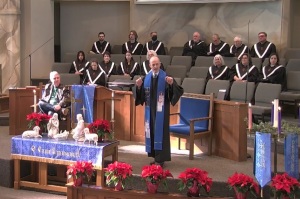Americans Looking to Wednesday Morning Sky for Meteor Shower
Night owls and early birds alike will have the opportunity to witness the Quadrantids meteor shower early Wednesday morning, when fragments of space debris will paint streaks across the sky as they burn up in the Earth's atmosphere.
According to NASA's website, the shower will be a “brief, beautiful show” that will be visible Tuesday but will peak in the early hours of Wednesday, Jan. 4. The Quadrantids got its name from Quadrans Muralis, a former constellation discovered in 1795 that is no longer recognized by scientists.
As many as 100 meteorites per hour could potentially be seen Wednesday morning, and the peak viewing time will be the two hours between the setting of the moon (about 3 a.m. EST) and dawn.
Ed Krupp, director of Griffith Obervatory in Los Angeles, Calif., told The Christian Post on Tuesday that the best way to view the meteor shower is to find a place away from city lights where the weather is clear so that it doesn't obstruct the view.
"For this particular shower, the meteors tend to be fainter than the other showers, and that really puts the emphasis on going out some place that really is dark, away from city lights,” he said. NASA also advises that viewers give their eyes 30 minutes to adjust to the dark so they can see more meteors.
It is unclear as to why the Quadrantids are generally fainter than other meteor showers, Krupp says, but there are a number of factors that determine just how bright they will be.
"The brightness of the meteors depends, in part, on their composition and size. That is, what size of these fragmented particles do we have? And that is ultimately related to the history of them coming off of the parent object – in this case, an object that may be a dead comet nucleus,” he said.
The space debris that causes the streaks of light in our atmosphere originated from the 2003 EH1 asteroid, NASA explains, which is believed by some scientists to be a piece remaining from a broken-up comet. The debris flies toward Earth at speeds of 90,000 miles per hour before burning up in the atmosphere.
Because of the widespread interest in Wednesday's meteor shower, Marshall Space Flight Center has set up a live video feed of the skies over Huntsville, Ala., where the weather is expected to be clear and the Quadrantids visible. The live stream can be viewed at NASA's website.
The Quadrantids meteor shower is positioned to be best seen by spectators in the Northern hemisphere, Krupp said, but patience also plays a role for those who hope to see a show.
"The key thing in this case is to be up at the right time and be willing just to stay up and watch,” he said. “It's kind of like fishing. Maybe you get a bite, maybe not."




























